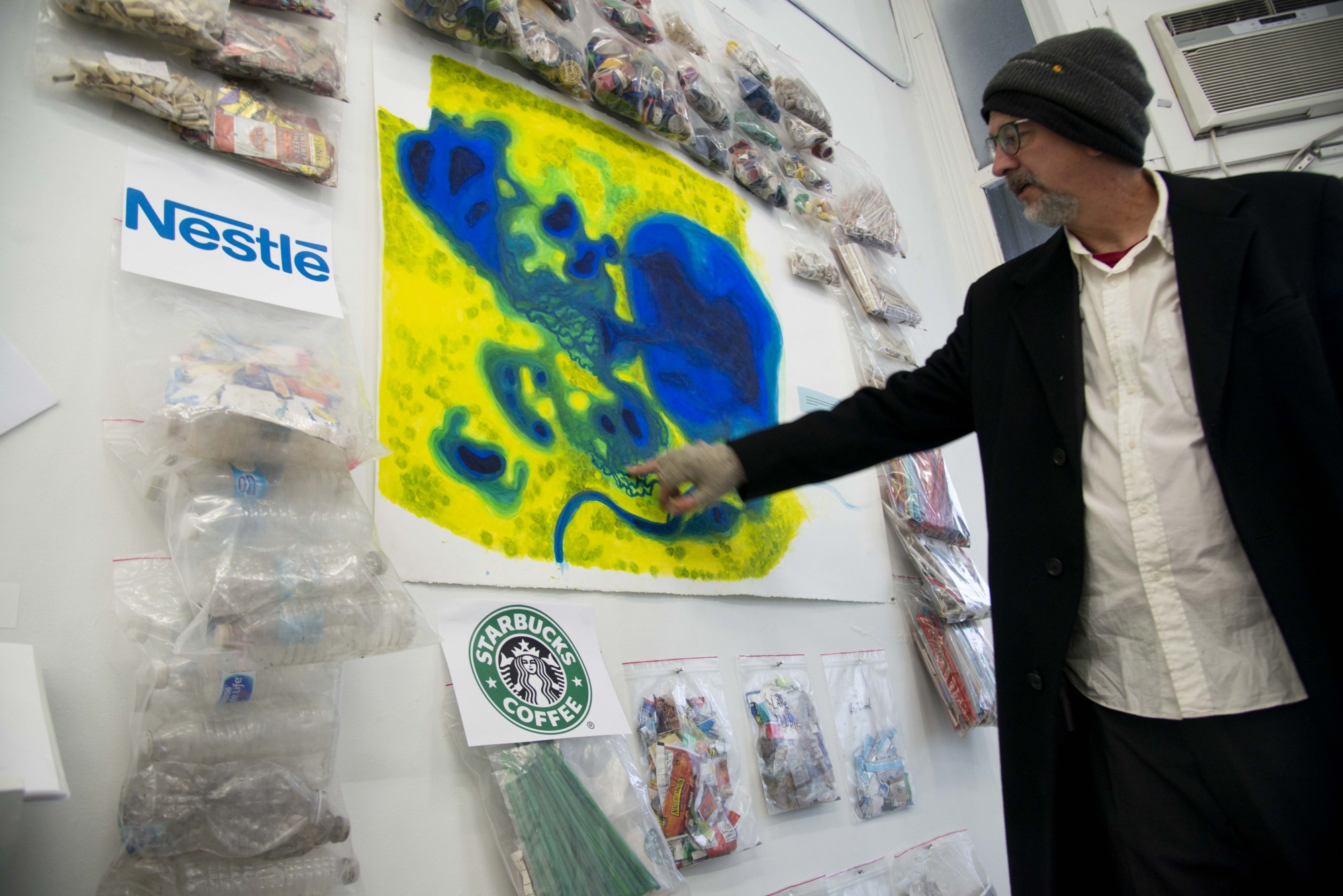A University of Minnesota professor, who has removed thousands of pounds of trash from Minneapolis’ Lake Hiawatha, has teamed up with people in the Indigenous community to shed light on pollution in the lake and the significance of the water to Native people.
Sean Connaughty, a University art professor, has picked up more than 6,800 pounds of trash from around Lake Hiawatha since he began in 2015. With the collected trash, Connaughty created art displays for a gallery in South Minneapolis which opened last week. The gallery space is full of items such as straws, bottles, toys and fast food containers, showing how polluted the waterway has become and encouraging action on the issue.
Some of the trash is organized by brand to highlight how some companies, such as McDonald’s, create more food packaging that ends up in the lake. Connaughty found a majority of the trash flows into the lake from street stormwater drains.
“We need to realize this trash is coming from us,” Connaughty said.
Part of Connaughty’s initiative involves incorporating Indigenous people and knowledge in the efforts to restore the lake. To do this, Connaughty is working with the Healing Place Collaborative, an initiative using Indigenous knowledge to better the land and community.

Incorporating Indigenous knowledge
Posters around the gallery describe the history of the Dakota people and how the area has been their home for thousands of years.
Connaughty said the involvement of Indigenous knowledge and participation is critical to restoring the lake because the water pollution was not an issue during the thousands of years they were the sole inhabitants of the land. It is not hard to find trash scattered around the lake currently, but Ethan Neerdaels, a Dakota culture and language specialist, said it has not always been this way.
At the gallery’s opening last week, Neerdaels spoke about how the Dakota people’s relationship with the environment allowed them to live there and keep the water clean for a long time. He said this connection to the Earth is often lost in society today.
“In 150 years of not being related to anything, we have polluted our waters,” he said, describing how we are exploiting the environment. “If this garbage is what we see around Lake Hiawatha, imagine what we can’t see. Imagine what is in our rivers and streams.”

City initiatives
Connaughty’s work has not gone unnoticed, and efforts are underway by the city of Minneapolis to find solutions to keep trash out of the water.
Part of a city project to rebuild wetlands around Lake Hiawatha also involves removing a stormwater pipe that previously pumped water and trash into the lake. Planners for the initiative are exploring devices to catch the trash before it flows into the water.
Tyler Pederson, project manager for the initiative, said other places have done this sort of collection system before.
A bigger challenge to reducing the lake’s trash intake is figuring out how to catch the waste that is flowing into it via Minnehaha Creek. Because of the large volume of water coming down the creek, Pederson said it is harder to minimize trash flow.
“The bigger issue is that trash is winding up in the gutter,” he said. “The simplest and cheapest way to fix this is to not throw your trash in there.”








